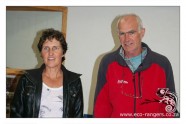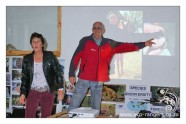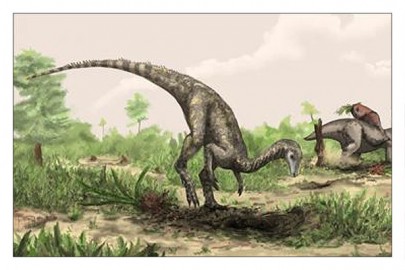Reserve GoPro Camera hand over, African Bats and The dawn of Dinosaurs (Series 1)
Friday 16th August 2013
While the cape wind was howling outdoors, breaking branches off trees and whipping up large areas of leaf matter into the air and dumping it elsewhere . . . the Eco-Rangers where safely in the Environmental Education Center enjoying an exciting and entertaining programme.
Firstly, we had Owen Wittridge, Helderberg Nature Reserve manager, joining us.
This was an exciting occasion as the Eco-rangers had saved up and purchased a much needed GoPro Hero3 Black Edition camera for the Helderberg Nature reserve which is managed by the City of Cape Town. The cost for this camera was in the region of R5000 and as a result it was out of reach for the Nature reserve at this time due to budget constraints.
Owen spent a few moments speaking to the children, explaining how the camera would be of use in the reserve.
To keep the baboons at bay in the reserve, they will be utilizing paint ball guns. The paint ball guns act as a deterrent and cause the baboons to avoid the area. This is a reasonably safe and relatively effective method of controlling baboons so long as they do not become habituated to this deterrent and move in when the guns are not active. The camera will be used by the reserve team of staff to monitor the baboon chasers to make sure they do not abuse the use of the paint ball guns. We look forward to seeing some of the footage from the camera in the near future. In the meantime, we at Eco-Rangers wish Owen and his team all the very best in utilizing this wonderful tool.
Second on the agenda was the talk by Andre Fourie & Marienne de Villiers. They had both taken the time to join us and speak about African Bats. Andre and Marienne are dedicated researchers when it comes to Bats and they had a captivating presentation to share with the children and interested parents.
There is a great need for education, creating awareness and thus improving public understanding of bats. These nocturnal creatures play a very important role in the eco-system. And they are not all vampires and harmful as you might have been led to believe. Many of them eat insects and fruits. They’re great for keeping mosquito populations down. In some cases they are beneficial to farmers in that they eat pests and they can be responsible for fertilisation of some crops.
The children enjoyed the sing along song which explained echolocation. And for the rest of the day we had happy singing in the centre. What is Echolocation? Bats send out sound waves using their mouth or nose. When the sound hits an object an echo comes back. The bat can identify an object by the sound of the echo. They can even tell the size, shape and texture of a tiny insect from its echo. Most bats use echolocation to navigate in the dark and find food. Following this, the children were shown a young man who has learned the technique of echolocation. He was blind and to continue with life he learned this skill which then allowed him to roller blade like any other child of his age. Amazing!
One of the projects Andre and Marienne are working on is the effect of wind turbines on bats. Dead bats are turning up beneath wind turbines all over the world. A recent study shows that the moving blades cause a drop in pressure that makes the delicate lungs of bats suddenly expand, bursting the tissue’s blood vessels. This is known as a barotrauma, and is well-known to scuba divers.
Did you know that there are 50+ species of Bats in South Africa alone?
Yes, we have tiny bats, furry bats, giant bats and generally, they are all good. Take some time to learn more about these creatures and you will see they are not the blood sucking, dirty, flying mice you might think. This talk was most welcome as our Eco-Rangers will have the opportunity to spend some time studying the bats living in our local reserve. Thank you to Andre and Marienne for sharing this fascinating information with us.
Finally, we reached the theme for the week being ‘The dawn of Dinosaurs’. Most Eco-Rangers will know how the dinosaurs met their end: A huge meteorite slamming into Mexico’s Yucatan Peninsula 65 million years ago. But very few people know how dinosaurs appeared in the first place. Today they learned more about these very first dinosaurs that walked on out planet. Toward the end of last year (2012), a dinosaur fossil (Nyasasaurus parringtoni) the size of a Labrador retriever was discovered stored away in the Natural History museum of London.
This dinosaur probably walked the Earth about 243 million years ago, suggesting the first reptiles were born much earlier than previously thought. This diverse and most intersecting subject kept the children focused and absorbed for the rest of the afternoon as they went about making their own fossil cast. Our genet group spent time making up a dinosaur diorama.
I am sure you will agree that this was a busy, if not somewhat hectic afternoon with so much to cover. Next week we will be having just as much fun as we tackle the subject of our red data species, the beautiful, strong and persistent honey badger. The focus of this discussion will be the battle between the Honey Badger and the beekeepers.













